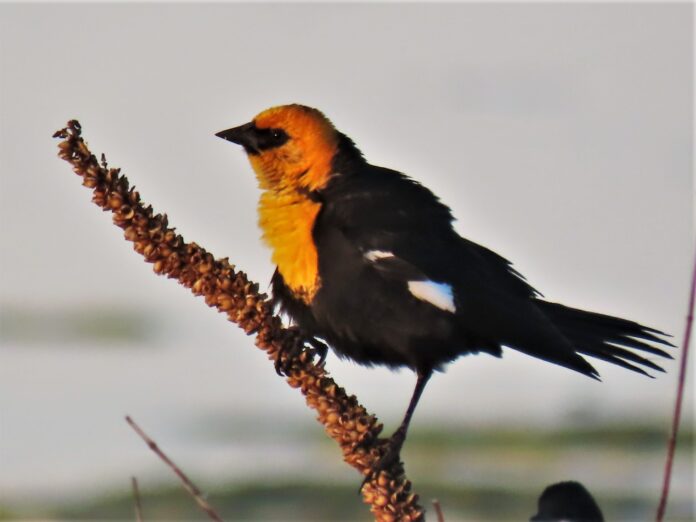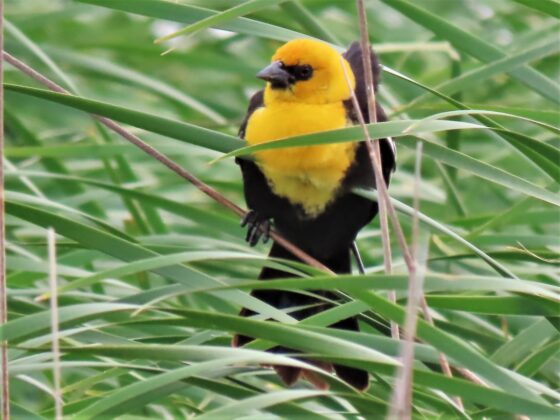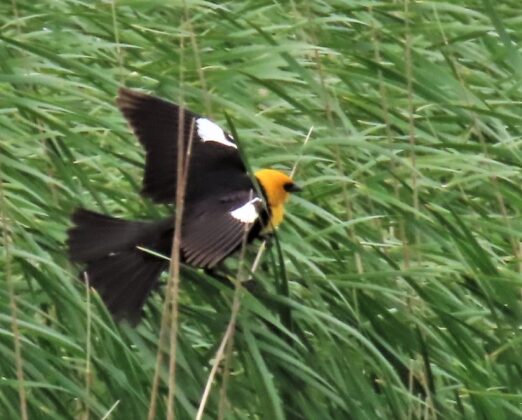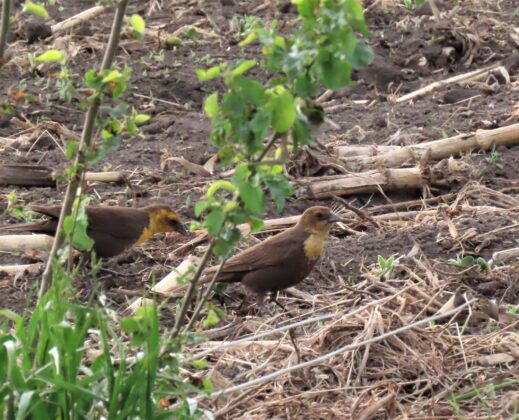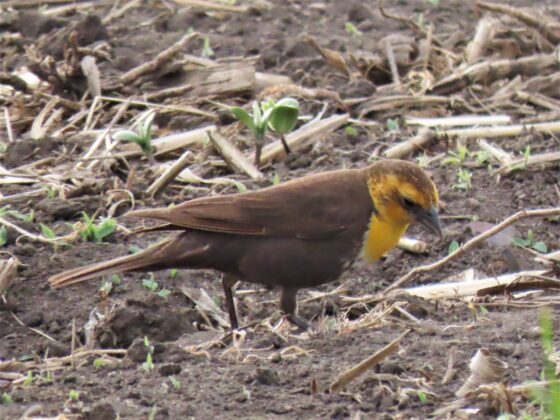I was telling some friends about my latest birding trip to Union Slough near Algona, Iowa. They politely asked what I saw and what species of bird I was looking for, and I told them I was trying to get some good photos of trumpeter swans and yellow-headed blackbirds.
These two species are known to nest in Union Slough. My friends’ reaction was, “What kind of black birds?” They had never heard of a yellow-headed blackbird, much less have seen any.
It is not an uncommon bird, but its preferred habitat is in areas that humans seldom visit, and it does not come to backyard feeders. It is mainly found in the northwest quarter of Iowa in marshes, wetland and sloughs.
However, I have also seen them in central Iowa at Voas Nature Area west of Minburn, Brenton Slough near Granger, Snake Creek Marsh north of Rippey and Goose Lake in Green County.
The males are easy to see. Their body is black with a bright yellow head and throat. When they fly, white patches are visible in the middle of the wings. Their call is also distinctive.
The famous ornithologist David A. Sibley describes the male’s call as like a rusty gate turning on hinges. Females make a chattering sound that might be called a song.
The yellow-headed blackbird spends its winters in the southwestern part of the U.S. and Mexico. The males arrive in Iowa in April and begin to establish their territories in the nesting areas. The females join them a month later.
In 1984 a study done by Iowa State University estimated that there were 36,000 of this species in Iowa, and ornithologists believe that the population is today about the same.
Yellow-headed blackbirds are in the Icteridae family, the same group with other blackbirds, orioles and larks.
They nest in large colonies, and sometimes there will be several hundred pairs of them in a wetland and as many as 20 pairs per acre if there is an abundant food supply.
The males will mate with two to six females and keep them from other males and protect them from the marsh wrens that harass the females when she is sitting on eggs. Only the dominant males breed, leaving many of the younger males without mates.
The female yellow-headed blackbird is about the size of a robin, with a brown back and wings. Her head and breast are a dull-yellow color.
After the birds mate, she does all of the work of raising the family. She builds a basket-shaped nest from dry stems, weaving the fibers in an intricate pattern. The nest is about two feet above the water’s surface in dense vegetation of cattails, bulrushes or reed grass.
The female lays four light-colored eggs that she incubates for 12 days and then feeds the brood for nearly two weeks until the young birds fledge. The male provides very little care for the young birds.
If there is a nest failure due to storms or predation, she will usually attempt to raise a second brood. Nest predators are mink, raccoons, muskrats and snakes, all of which will eat the eggs and the young while they are still in the nest.
The little marsh wren will also eat the eggs and harass a sitting female. Once the young have fledged, they are often attacked by hawks and owls.
The yellow-headed blackbirds seems to be doing well in Iowa, and they have a stable population. Their biggest threat is loss of habitat and lack of water in their nesting areas. Prolonged droughts, such has Iowa has experienced the last few years, could have a serious impact on these beautiful birds.



